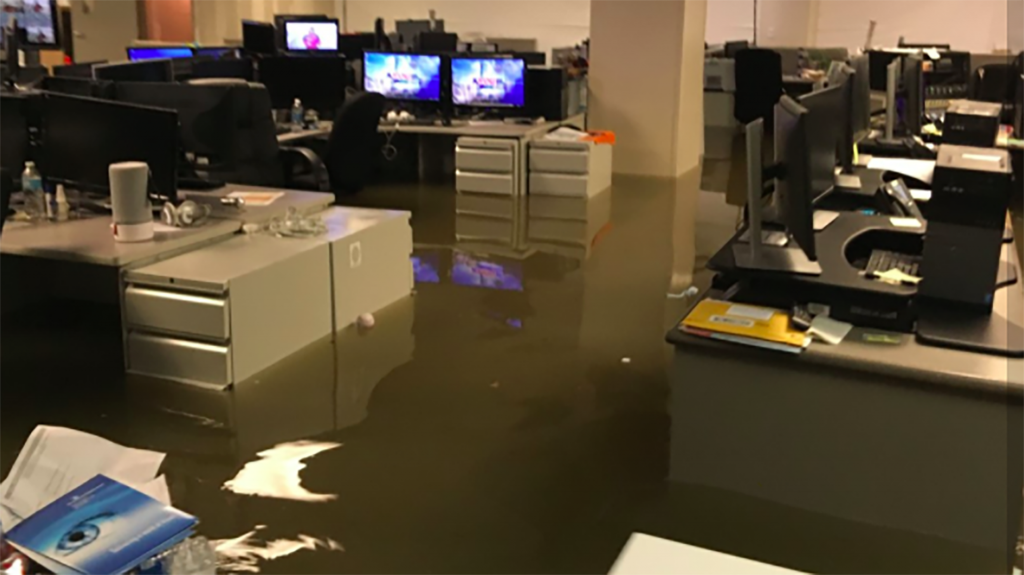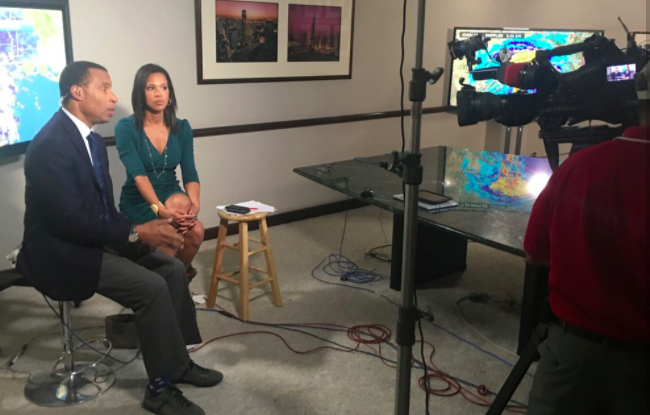
It happened in the summer of 2017, but KHOU news director Sally Ramirez remembers as though it were yesterday. And when you hear the story, you understand why — and why Ramirez has a unique perspective on coping with the challenges of COVID-19.

Hurricane Harvey was bearing down on Houston. Ramirez had only been on the job for a year and half, but she and her team had a sophisticated hurricane plan, handed down from news director to news director — standard practice along the Gulf Coast. And when chief meteorologist David Paul warned Ramirez that “there’s a potential we could get 50 inches of rain,” she asked station owner TEGNA to send in extra crews ahead of the storm. “Honestly, I was thinking what am I going to do with all these people when they get here and there’s nothing to cover?” Ramirez recalls. “Because what are the chances we’re really going to get 50 inches of rain, right? However, we had to prepare for it.”

Sure enough, by Saturday night August 26, Harvey’s relentlessly rising waters were at the station’s doorstep — and didn’t stop there. “The water started coming into the studio. It was coming from the ground and also from the ceilings,” Ramirez says. “The next morning — we hadn’t slept all night — we realized we needed to evacuate, because we would become an island very quickly.” The building at 1945 Allen Parkway had been home to KHOU for 60 years. As the flood waters inside inexorably kept rising — eventually to five feet — the last news people left the station. They would never set foot there again.

Thus began an 18-month odyssey that’s a testament to team effort, technical ingenuity, and the kind of fierce dedication by local TV journalists that we’re seeing today in every newsroom in the face of the COVID-19 pandemic. Except for an 8-hour interruption when the storm knocked KHOU off the air, the team kept broadcasting, even without a TV station. TEGNA engineers cobbled together a control room at Dallas sister station WFAA, and KHOU in effect became a permanent remote. “For 18 months we were essentially one giant live shot,” explains Ramirez. “We were printing out photos of our staff so that [the people in Dallas] would know who they’d be talking to. Back here in Houston, we couldn’t see anything. We were flying blind.”

Over the ensuing months the team without a home had to cover not just the aftermath of Harvey, but the deaths of Barbara and then George Bush; the high school shooting in Santa Fe, Texas; and the Astros’ World Series win.
Ramirez gives credit to the “hundreds of people” who came in to help from around the company — “It was all hands on deck to help Houston, help KHOU, and allow us to serve our community” — not to mention her local competitors. “Every news director called me and said, ‘How can we help you? What do you need from us?’”
That ecumenical spirit is back. As in many other cities, Houston’s local news leaders have banded together to pool coverage of the COVID-19 pandemic. “Listen, we all know this isn’t about being competitive right now,” Ramirez says. “It’s about the health and well-being of our employees, keeping our staff safe while still serving our community.”

Not even Hurricane Harvey could prepare anyone for the unprecedented challenges of covering COVID-19. But Sally Ramirez sees the parallels — and remembers the lessons.
“Don’t underestimate anything: be prepared for the worst case scenario,” she says. “Do not be afraid to ask for help. And ask early.” Ramirez says KHOU’s staff started taking precautions before they were mandated. “We know our role and what we would be needed to do. So stay safe. Practice good hygiene, Sleep well. Take care of yourself.”
Perhaps most important, Ramirez stresses the need for physical and emotional resiliency over the long haul. “So we also learned to pace ourselves. I think that’s an important [lesson from] Harvey. It was really, really hard. And it’s because we’d never experienced anything like that. But this is going to be a long time too. So we need to pace ourselves.”
Most of KHOU’s team is working remotely — again — but this time, so is pretty much every other TV news operation. “Working remotely is something that we’ve experienced. We’ve been there,” Ramirez says. “It’s a little bit harder — the isolation part of this — right now. But we know that we’ve been separated before, and we will come back together.”
Watch KHOU’s own story of survival — one year after Hurricane Harvey.
I caught up with Ramirez (via Zoom) in her nearly empty newsroom; the station moved into spanking new quarters in February of last year. Meteorologist David Paul was at work too — teaching “Weather School” to kids stuck at home. The day we talked, TEGNA announced temporary pay cuts for top station brass and staggered one-week unpaid furloughs for staff.
But perhaps paradoxically, Hurricane Harvey’s legacy for this station and this news director in a time of pandemic is a feeling of hope. “We know that together we can get through anything,” says Ramirez. “It’s the belief that we have in each other: we know we’ve been through really difficult circumstances before.”